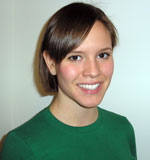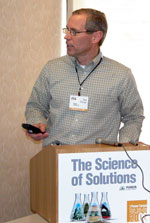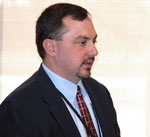 What do growing forages and BSE have in common you may ask? When the BSE crisis hit the Canadian cattle industry in 2003, most watched cattle producers struggle, what to do with their cattle, in some cases almost worthless. However, the effects of that crisis reached out to almost every segment selling into that industry.
What do growing forages and BSE have in common you may ask? When the BSE crisis hit the Canadian cattle industry in 2003, most watched cattle producers struggle, what to do with their cattle, in some cases almost worthless. However, the effects of that crisis reached out to almost every segment selling into that industry.
“BSE certainly reduced our sales because the cattle producers didn’t have much income and so they weren’t buying very much seed,” Dave Dyck of Dyck Forages and Grass at Elie, Manitoba. “The last year, particularly in Manitoba and southern Saskatchewan, the wet spring dropped our retail sales even more.”
However, things are looking up. Dyck says there’s more interest this spring than last year at this time.
“I expected that, because we have some pent up demand to reseed some fields and put in some new hay and pasture fields,” he said. “Moreover, there are some improvements in the price of cattle. The cattle producers are probably feeling a little more encouraged to spend some extra money on some seed.”
However, the cattle industry in Canada will feel the effects of the U.S. closing the border to Canadian cattle for a long time. Keeping the border closed to live cattle over 30 months of age keeps a lid on the prices producers get for those animals.

 Meet Mary Irelan, University of Illinois student and about to become, AgWired blogger. Actually, she’ll just be blogging her experiences as a first time visitor to Commodity Classic next week. Her trip is being sponsored by
Meet Mary Irelan, University of Illinois student and about to become, AgWired blogger. Actually, she’ll just be blogging her experiences as a first time visitor to Commodity Classic next week. Her trip is being sponsored by  Meet Margy Fischer, University of Missouri student and also blogging her Commodity Classic experience right here on AgWired. Both Mary and Margy will begin blogging their trip next Tuesday. All their posts will be categorized by their name so you can easily find them, since they’ll be mixed in with my coverage of the event. Additionally, they’ll also be helping me with my coverage. I was very happy to find out that they will be bringing a digital camera and notebook computer. That’s what the ag journalist of the future must be equipped with.
Meet Margy Fischer, University of Missouri student and also blogging her Commodity Classic experience right here on AgWired. Both Mary and Margy will begin blogging their trip next Tuesday. All their posts will be categorized by their name so you can easily find them, since they’ll be mixed in with my coverage of the event. Additionally, they’ll also be helping me with my coverage. I was very happy to find out that they will be bringing a digital camera and notebook computer. That’s what the ag journalist of the future must be equipped with. I think Monsanto is one of the companies that’s “getting it.” They’re already
I think Monsanto is one of the companies that’s “getting it.” They’re already  Our last session of the day involves a discussion on intellectual property rights and how they benefit society.
Our last session of the day involves a discussion on intellectual property rights and how they benefit society. When we got to precision farming it was time for a tag team approach again. Getting this session started was Tom Doerge, Agronomy Research Scientist. Tom talked about using yield monitors and doing on-farm testing. He had some great photos of fields in which different treatments were applied side-by-side and in other patters. I will ask if these presentations are available.
When we got to precision farming it was time for a tag team approach again. Getting this session started was Tom Doerge, Agronomy Research Scientist. Tom talked about using yield monitors and doing on-farm testing. He had some great photos of fields in which different treatments were applied side-by-side and in other patters. I will ask if these presentations are available. Tag team member Todd Prescott got into the services Pioneer offers its customers who want yield mapping done for them. A certain amount of this information is or can be available via internet and computer. So, I asked him what kind of feedback he gets from growers about internet access. I was surprised and pleased to hear him say that farmer access to broadband is growing fast. He sees a lot of DSL becoming available and throughout the corn belt and soybean growing areas of the country. In fact, he’s spoken with growers who now have high speed options. He’s been hearing growers say they’ll have it installed and working as soon as they can now that it’s available in their area.
Tag team member Todd Prescott got into the services Pioneer offers its customers who want yield mapping done for them. A certain amount of this information is or can be available via internet and computer. So, I asked him what kind of feedback he gets from growers about internet access. I was surprised and pleased to hear him say that farmer access to broadband is growing fast. He sees a lot of DSL becoming available and throughout the corn belt and soybean growing areas of the country. In fact, he’s spoken with growers who now have high speed options. He’s been hearing growers say they’ll have it installed and working as soon as they can now that it’s available in their area. Jody did a great job and I hope he earned himself a Pioneer logo blazer!
Jody did a great job and I hope he earned himself a Pioneer logo blazer! I said there’s a lot of media here at the Pioneer event. I’m actually surprised that almost all of them have stayed through the whole event.
I said there’s a lot of media here at the Pioneer event. I’m actually surprised that almost all of them have stayed through the whole event. Nitrogen utilization is a very important issue today. Ask Cindy, who’s editing our
Nitrogen utilization is a very important issue today. Ask Cindy, who’s editing our  Number two on the program today is Steve Paszkiewicz, Agronomy Research Scientist.
Number two on the program today is Steve Paszkiewicz, Agronomy Research Scientist.
 We’re back in the presentation room here at Pioneer. Today is research day. Lots of information about the research work that’s going on.
We’re back in the presentation room here at Pioneer. Today is research day. Lots of information about the research work that’s going on.